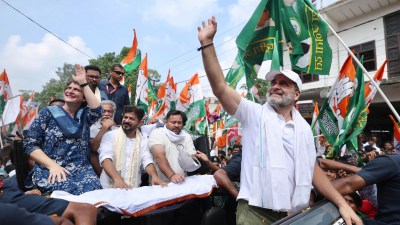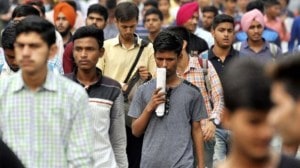Safdarjung Hospital: 34 infants die in a week, 12 on one day
Whatever emphasis the Honourable Finance Minister gives to Health today, it will perhaps not matter here—in the pediatric wards at New ...

Whatever emphasis the Honourable Finance Minister gives to Health today, it will perhaps not matter here—in the pediatric wards at New Delhi’s leading Safdarjung Hospital.
Official records accessed by The Indian Express show that from June 28 to July 4—in just seven days—34 child patients have died, as many as 12 of them on one single day: July 3.
The children, between one month and 4 years of age, died of pneumonia, sepsis, meningitis, respiratory failure and brain fever—diseases that, on paper, should be cured in a hospital of Safdarjung’s reputation. Two of the dead were HIV positive.
The death-traps are Wards 18 (10 dead), 20 (11 dead) and 21 (10 dead). Ward 19 is the ‘‘safest’’ with three deaths in seven days.
But last Saturday, July 3, was the worst.
While four of the children who died that day were admitted the same day, the remaining eight who died were in the hospital for a few days. According to records, the July 3 dead include:
• 4-year-old Komal from Gurgaon, who died 13 days after her admission. The hospital could not control her anaemia and sepsis.
• Hemlata of Vijay Enclave, Delhi, died nine days after admission, died nine days after admission, cause of death: ‘‘intestinal obstruction.’’
• Deevakar, 4 months, of Shahpur Jat, Delhi, of ‘‘neonatal cholesterol.’’ (See box for entire list)
|
The Death Saturday
|
|||||
|
The list of children who died on July 3, 2004: WARD NO 18 WARD NO 20 WARD 21 |
|||||
When contacted, D P Ahirwar, head of the pediatrics department said: ‘‘I am not authorised to speak. The medical superintendent will comment.’’
R N Salhan, Medical Superintendent of Safdarjung, said: ‘‘I don’t cannot comment on this issue. I will show you my own data.’’ On July 5, a written request was sent by The Indian Express for his ‘‘data,’’ with no results.
But senior doctors of the department, who did not want to be named, confirmed the deaths and blamed it on ‘‘non-availability’’ of essential drugs and IV fluids. ‘‘Last week, there was major shortage of important antibiotics Monosafe, Magnamycin, Fortum. Parents are asked to purchase these medicines which cost anything from Rs 50 to Rs 100 per dose,’’ said a senior doctor,
While only a probe can fix the cause of these deaths, a visit to the overcrowded wards shows a picture of neglect. Incidentally, last year, Rs 8.37 crore of unused money was returned to the government by hospital authorities:
• No drinking water: ‘‘We have to go from one corner of the hospital to another to get water,’’ said Visal Ahmad, whose daughter is admitted in Ward 20.
• No ventilators: The requirement, senior doctors say, is at least three in each ward. Sources said six ventilators were sanctioned last year but no purchases made yet.
• No pediatric ICU: Emergency cases are handled in the wards.
• No portable X-ray machines: Sources said the ones
• The wards require portable X-ray machines, none of which has been functional for the past one year.
• Sanitation inspector says that for last one year, even requirement of detergent powder has not been met.



- 01
- 02
- 03
- 04
- 05




























